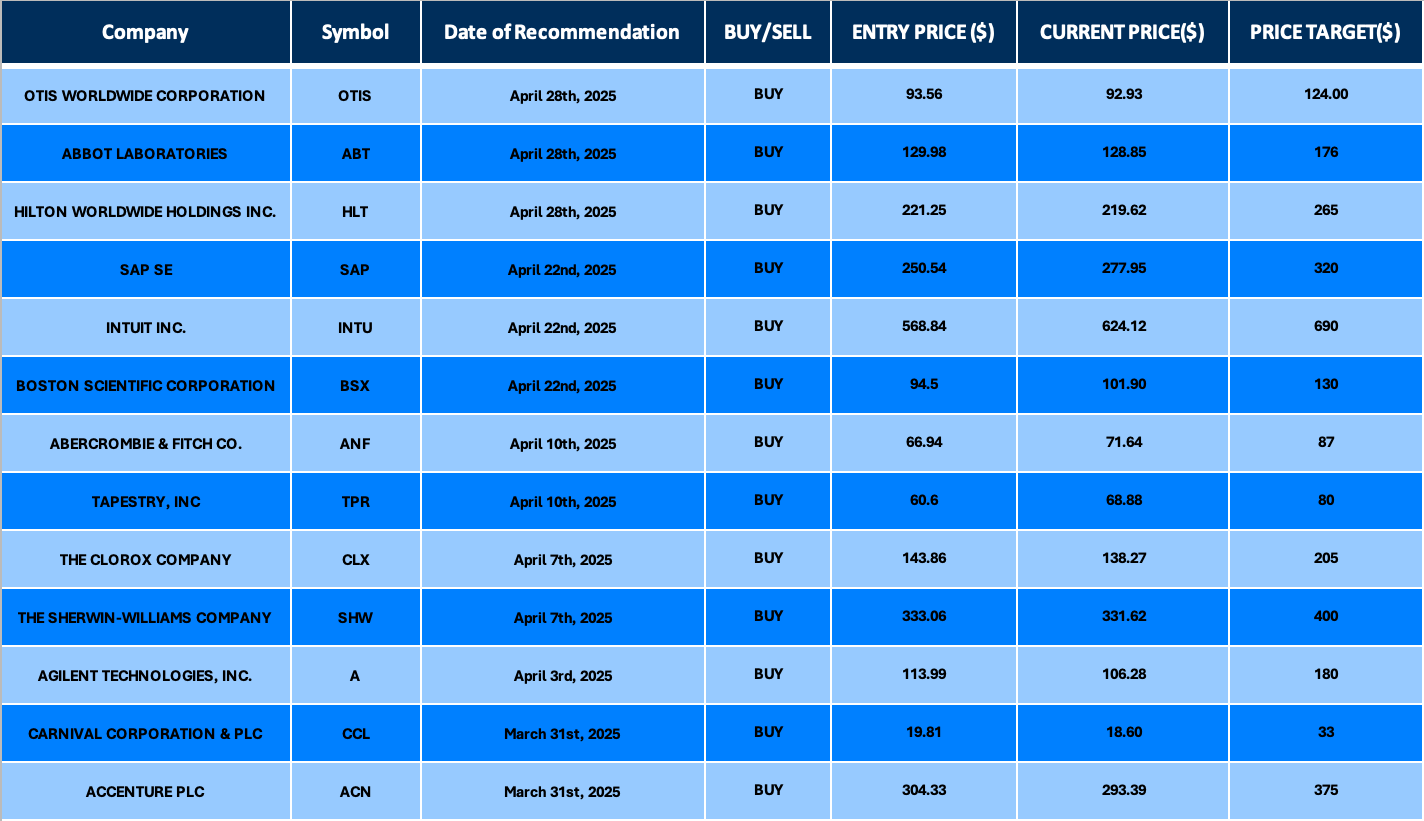
Date Issued – 12th May 2025
Preview
Global markets rallied as the U.S. and China agreed to reduce tariffs and pause new duties for 90 days, lifting equities and oil prices while easing recession fears. S&P 500 and Nasdaq futures surged, and Brent crude rose over 3%, signaling renewed optimism for global trade. Meanwhile, Asian pharma stocks slid after Donald Trump pledged steep U.S. drug price cuts, raising regulatory risks for the sector. In South Asia, Pakistani and Indian stocks soared following a ceasefire, shifting focus back to growth prospects. On the tech front, Bank of America reaffirmed a bullish outlook for AI capex in 2025, with Nvidia and Broadcom identified as top beneficiaries of robust hyperscaler spending.
Markets Rally as U.S. and China Agree to Tariff Reductions and 90-Day Pause
Global markets surged after the U.S. and China reached an agreement to cut tariffs and implement a 90-day pause in their trade dispute. The U.S. reduced tariffs on Chinese imports to 30%, while China’s duties on U.S. goods fell to 10%. S&P 500 and Nasdaq futures jumped 2.8% and 3.6%, respectively, with Europe’s STOXX 600 gaining 1%. The dollar strengthened, rising 1.1% against the yen, while 10-year U.S. Treasury yields climbed 6 basis points to 4.435%.
Analysts described the move as a “step in the right direction,” boosting risk sentiment and easing concerns over global supply chain disruptions. However, the temporary nature of the agreement suggests further volatility if a final deal is not reached.
Investment Insight
The tariff reduction and market rally create opportunities in equities, particularly in export-driven sectors and Chinese ADRs. However, the 90-day pause is a reminder of ongoing uncertainty. Investors should remain cautious, prioritizing companies with resilient supply chains. Diversifying into high-quality bonds or U.S. dollar assets may mitigate risks from potential volatility as negotiations continue.
Trump’s Drug Price Pledge Rattles Pharma Stocks
Asian pharmaceutical stocks slid on Monday as former President Donald Trump vowed to slash US drug prices by up to 80%. Trump’s proposed executive order would impose a “most favoured nation” policy, capping US drug prices at the lowest rates available globally.
Shares in Samsung Biologics, SK Biopharmaceuticals, and BeiGene dropped 4%, 2.5%, and 7.9%, respectively, while Sun Pharma led losses in India, falling over 5%. The pharmaceutical industry, which has historically opposed such measures, warned the move could stifle innovation and undermine research funding. Trump dismissed these claims, signaling a tough stance against industry lobbying. The announcement echoes prior efforts during his presidency, which were blocked by legal and political resistance.
Investment Insight
Trump’s renewed focus on drug pricing could heighten regulatory risk for pharmaceutical stocks, particularly those with significant US exposure. Investors should monitor developments closely, as the proposed “most favoured nation” policy may pressure margins and disrupt global pricing strategies. Diversification into healthcare sectors less reliant on drug pricing, such as medical devices or diagnostics, could provide a strategic hedge.
Pakistani, Indian Stocks Surge Amid Ceasefire Optimism
Markets in Pakistan and India rallied sharply after a ceasefire agreement over the weekend eased geopolitical tensions. Pakistan’s KSE-30 Index soared 9.2%, triggering a brief trading halt, while India’s NSE Nifty 50 Index climbed 3%.
Investors are pivoting back to economic fundamentals, with India’s growth prospects buoyed by anticipated US trade deals and potential rate cuts, while Pakistan eyes IMF funding and domestic reforms. The Indian rupee gained 0.9% offshore, and volatility gauges eased, signaling a positive shift in sentiment. However, lingering doubts over the truce’s durability could temper gains, as reports of violations surfaced shortly after the agreement.
Investment Insight
The ceasefire offers a tactical opportunity for investors to capitalize on renewed momentum in South Asian markets. In India, sectors tied to domestic growth, such as financials and infrastructure, stand to benefit from foreign inflows and improving liquidity. For Pakistan, IMF disbursements and structural reforms could support a medium-term recovery, particularly in undervalued equities. Caution is warranted, however, as geopolitical risks remain a potential overhang.

Oil Prices Surge on US-China Tariff Reduction Deal
Oil prices jumped over 3% on Monday as the U.S. and China agreed to reduce tariffs and suspend additional duties for 90 days, improving the outlook for global trade and crude demand. Brent crude rose $2.11 (+3.3%) to $64.14 per barrel, while WTI crude climbed $2.12 (+3.47%) to $63.14. The agreement between the world’s largest energy consumers lifted market sentiment, adding to last week’s gains of over 4% across both benchmarks. However, OPEC+ plans to increase output and ongoing U.S.-Iran nuclear talks, which could lead to higher supply, tempered further price increases.
Investment Insight
The easing of trade tensions between the U.S. and China is a bullish signal for oil demand recovery, making energy stocks and crude-linked ETFs attractive in the near term. However, investors should remain cautious as rising OPEC+ output and potential developments in U.S.-Iran negotiations could limit further upside in oil prices. Diversifying into integrated energy firms with downstream operations may provide a hedge against potential market volatility.
AI Capex Booms in 2025, Nvidia and Broadcom Remain Top Picks
Bank of America (BofA) forecasts a robust outlook for AI capital expenditures in 2025, with spending projected to reach $414 billion—up 44% from 2024. Key U.S. hyperscalers like Google, Microsoft, and Meta have reaffirmed or increased their capex guidance, signaling strong demand for AI infrastructure. Nvidia and Broadcom remain BofA’s top picks, while AMD and Marvell Technology also stand to benefit from expanded AI spending. Despite concerns over efficiency-driven models like China’s DeepSeek AI, hyperscalers continue to prioritize scaling frontier models and enterprise AI, driving demand for advanced chips and data center solutions.
Investment Insight
The sustained rise in AI capex underscores long-term opportunities in semiconductor and infrastructure firms supporting AI growth. Nvidia and Broadcom’s leadership in AI chips positions them for outsized gains, while investors may also explore exposure to Marvell and AMD for diversification. However, with competition and efficiency innovations like DeepSeek AI evolving rapidly, targeting companies with cutting-edge R&D and diversified client bases will be key for sustained returns.
Conclusion
Markets are riding a wave of optimism as U.S.-China tariff reductions, a South Asian ceasefire, and robust AI spending drive investor sentiment. While equity and commodity markets respond positively to easing trade tensions, the temporary nature of agreements highlights the need for caution in the face of geopolitical and regulatory risks. Energy and AI sectors present compelling opportunities, while defensive plays remain a prudent hedge against volatility. As global growth narratives take shape, investors should stay attuned to macroeconomic data and policy developments that could define market direction in the weeks ahead.
Upcoming Dates to Watch
- May 13th, 2025: US CPI, UK Unemployment rate, Japan PPI
- May 14th, 2025: German CPI, Japan Foreign Bonds buying, South Korea Trade Balance
- May 15th, 2025: US GDP, UK GDP, Trade Balance; German WPI, Switzerland PPI, Europe Economic Forecast, Japan GDP
- May 16th, 2025: Japan Industrial Production, Hong Kong GDP
Find below some of our Buy/Sell Recommendations. Balfour Capital Group is a distinguished global boutique investment management firm with $350 million AUM and over 1000 Clients.

Disclaimer: This post provides financial insights for informational purposes only. It does not constitute financial advice or recommendations for investment decisions.




